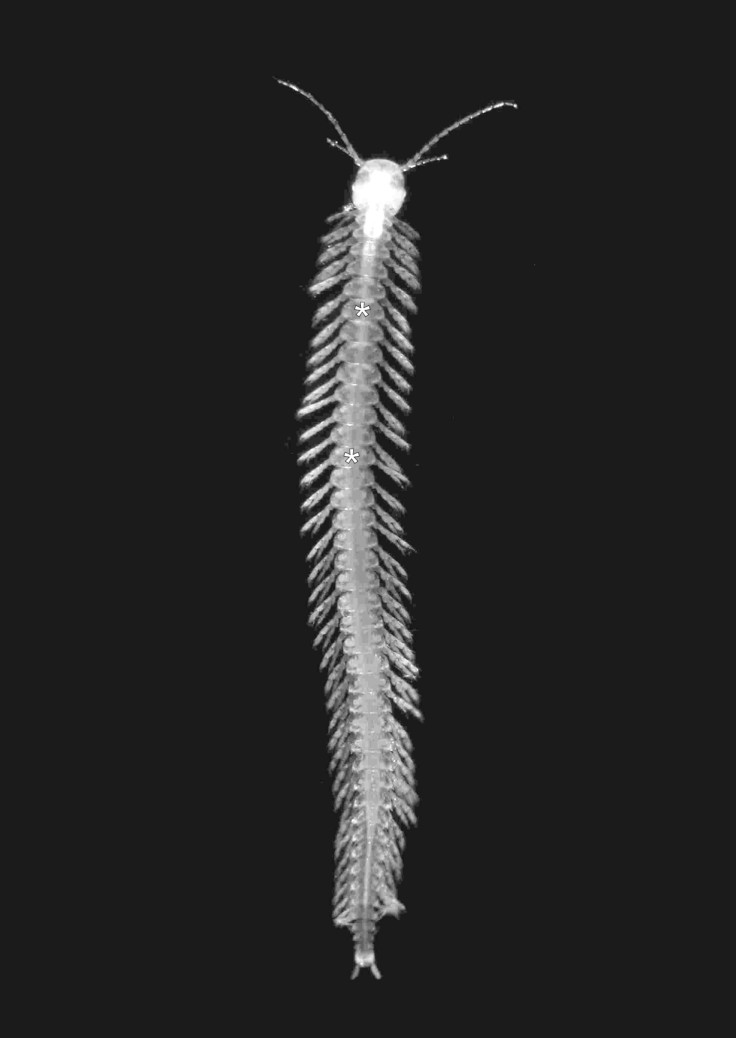First Venomous Crustacean Found, ‘Remipede’ Liquefies Prey With Toxic Bite

When was the last time you saw a venomous crab or lobster? If you answered “never,” we know you’re telling the truth, because they actually don’t exist. In fact, crustaceans stand out in the animal kingdom as one of the only arthropods -- the group of invertebrate animals with exoskeletons that includes spiders and scorpions -- that are not venomous.
That was until scientists from London’s Natural History Museum identified the first known venomous crustacean out of the approximately 70,000 crustacean species in the world. The remipede, or Speleonectes tulumensis, is a blind crustacean that lives in underwater caves off Western Australia, the Caribbean and the Canary Islands. The 0.4- to 1.6-inch-long remipede looks a lot like a centipede and can have up to 42 similar body segments. According to the BBC, the remipede also has a venomous bite that it uses to liquefy prey before devouring it.
"The spider-like feeding technique of the remipede is unique among crustaceans,” co-author Dr. Ronald Jenner, a zoologist at London's Natural History Museum, told the BBC. “This venom is clearly a great adaptation for these blind cave-dwellers that live in nutrient-poor underwater caves."
The remipede’s venom contains a mixture of toxins, including a paralyzing agent. Its venom is similar to that of a rattlesnake and is used to break down the body tissue of its meals.
Crustaceans, most of which are aquatic, belong to a large category of animals called arthropods. Shrimp, lobster, crab and krill are among the more well-known crustaceans out there. Venom is common in three of the four major groups of arthropods -- chelicerates (things like spiders and mites), myriapods (millipedes and centipedes) and hexapods (insects with six legs) -- but crustaceans are an exception to the rule.
According to National Geographic, scientists first discovered the remipede in the 1980s. They were named for the Latin word for “oar-footed” because of their swimming legs. Observers of the remipede quickly noted a pair of hollow-tipped fangs behind the crustacean’s head that looked like they were attached to glands.
“We had to do some work to confirm this, but that was the coolest finding,” study leader Ronald Jenner told National Geographic. “It makes sense for a blind, aquatic, cave-dwelling predator to have a paralyzing toxin so that prey can be instantly overwhelmed.”
The findings of the first venomous crustacean are detailed in the journal Molecular Biology and Evolution.
© Copyright IBTimes 2025. All rights reserved.






















